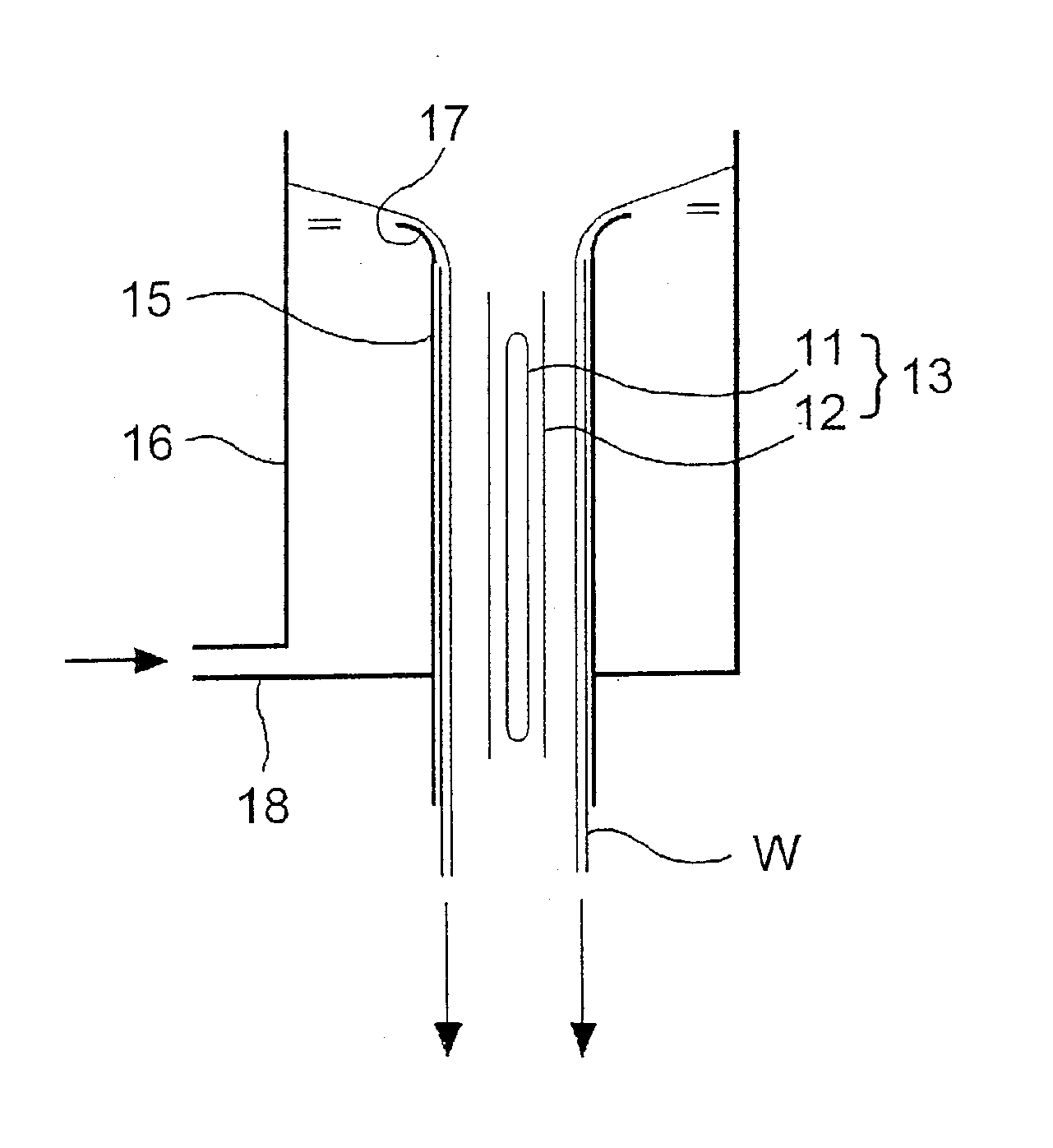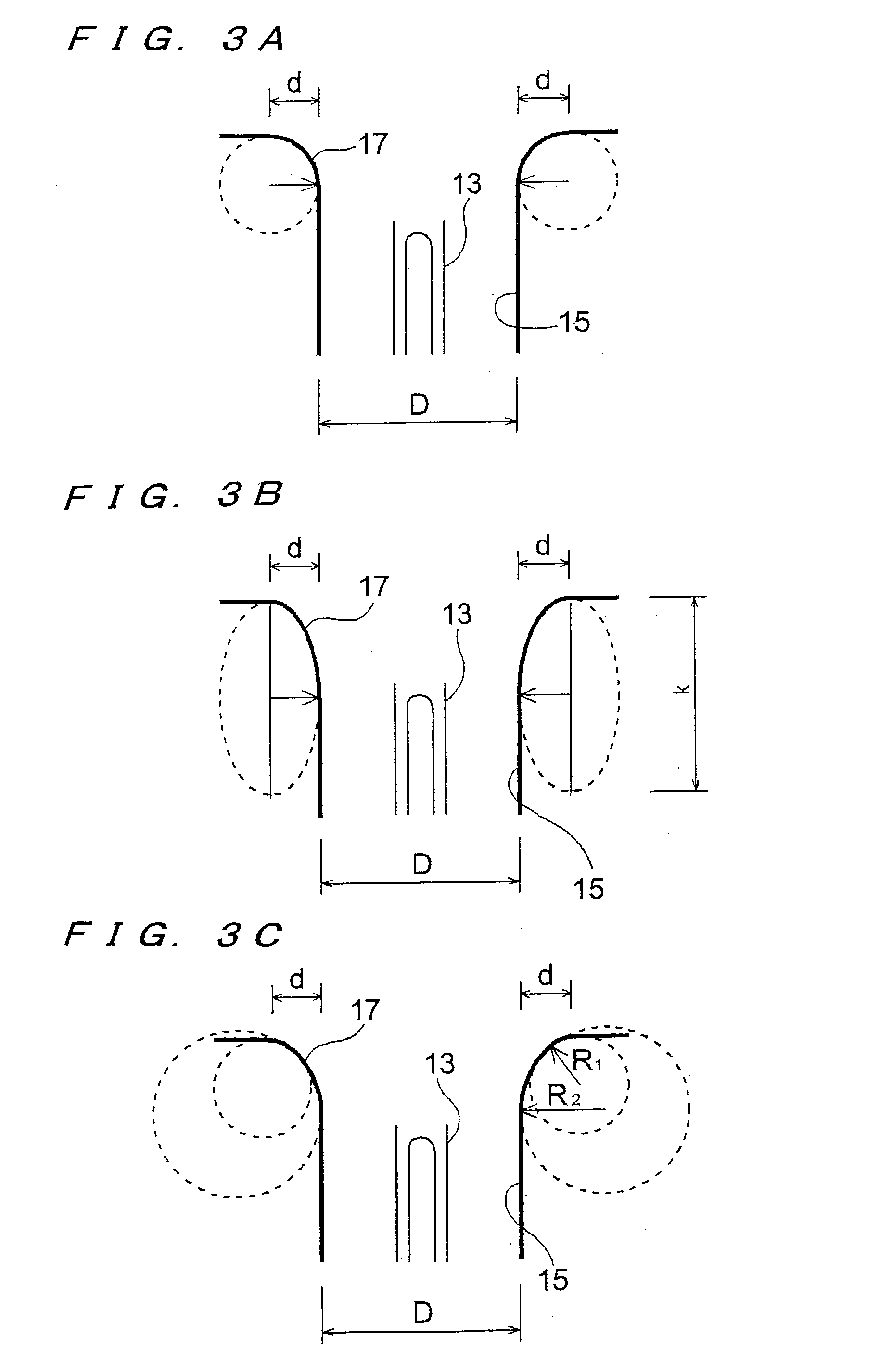Method and apparatus for electromagnetic irradiation of liquid
- Summary
- Abstract
- Description
- Claims
- Application Information
AI Technical Summary
Benefits of technology
Problems solved by technology
Method used
Image
Examples
example 2
[0054] Using the apparatus shown in FIGS. 1 and 2, a liquid having a hexachlorobenzene concentration of 10 .mu.g / l, an iron concentration of 5 mg / l, and a manganese concentration of 5 mg / l was treated with ultraviolet rays under the same conditions as those of Example 1:
[0055] As a result, the applied intensity of the ultraviolet rays after elapse of 24 hours remained substantially unchanged, and hence was substantially constant throughout the 24 hours. The hexachlorobenzene concentration in the treated water was 8 .mu.g / l on the average, and was reduced by 2 .mu.g / l. Almost all decomposed products were chlorobenzene having a chlorine number of 5 or less. These results show that a dechlorinating reaction is possible according to the present invention.
example 3
[0056] Using the apparatus shown in FIGS. 1 and 2, a liquid having a COD (Chemical Oxygen Demand) of 50 mg / l, TOX of 1 mg / l, an iron concentration of 5 mg / l, a manganese concentration of 5 mg / l, and a dissolved O.sub.2 concentration of 10 mg / l was treated with ultraviolet rays under the following conditions:
[0057] Ultraviolet lamp: medium-pressure mercury lamp (2 kW, the emission length of 350 mm)
[0058] Protective tube: outside diameter of 33 mm, made of ordinary quartz glass
[0059] Diameter of the inner wall surface irradiated with ultraviolet rays: 200 mm
[0060] Bell-mouthed surface: defined by an arc which is one-quarter of a true circle having a diameter of d=30 mm
[0061] Flow rate of the liquid: 50 to 250 l / minute
[0062] Operating time: 24 hours
[0063] Speed of the swirling flow in the liquid retention tank: 20 to 100 cm / second
[0064] As a result, the thin-film liquid layer on the inner wall surface of the cylinder was formed stably under the conditions of the flow rates up to 250 l / ...
PUM
 Login to View More
Login to View More Abstract
Description
Claims
Application Information
 Login to View More
Login to View More - R&D
- Intellectual Property
- Life Sciences
- Materials
- Tech Scout
- Unparalleled Data Quality
- Higher Quality Content
- 60% Fewer Hallucinations
Browse by: Latest US Patents, China's latest patents, Technical Efficacy Thesaurus, Application Domain, Technology Topic, Popular Technical Reports.
© 2025 PatSnap. All rights reserved.Legal|Privacy policy|Modern Slavery Act Transparency Statement|Sitemap|About US| Contact US: help@patsnap.com



